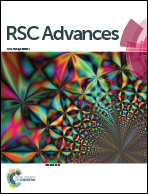Improvement of electrical conductivity in Pb0.96−yMn0.04SnyTe alloys for high temperature thermoelectric applications
Abstract
Lead–tin–telluride is a well-known thermoelectric material in the temperature range 350–750 K. Here, this alloy doped with manganese (Pb0.96−yMn0.04SnyTe) was prepared for different amounts of tin. X-ray diffraction showed a decrease of the lattice constant with increasing tin content, which indicated solid solution formation. Microstructural analysis showed a wide distribution of grain sizes from <1 μm to 10 μm and the presence of a SnTe rich phase. All the transport properties were measured in the range of 300−720 K. The Seebeck coefficient showed that all the samples were p-type indicating holes as dominant carriers in the measurement range. The magnitude increased systematically on reduction of the Sn content due to possible decreasing hole concentration. Electrical conductivity showed the degenerate nature of the samples. Large values of the electrical conductivity could have possibly resulted from a large hole concentration due to a high Sn content and secondly, due to increased mobility by sp–d orbital interaction between the Pb1−ySnyTe sublattice and the Mn2+ ions. High thermal conductivity was observed due to higher electronic contribution, which decreased systematically with decreasing Sn content. The highest zT = 0.82 at 720 K was obtained for the alloy with the lowest Sn content (y = 0.56) due to the optimum doping level.


 Please wait while we load your content...
Please wait while we load your content...